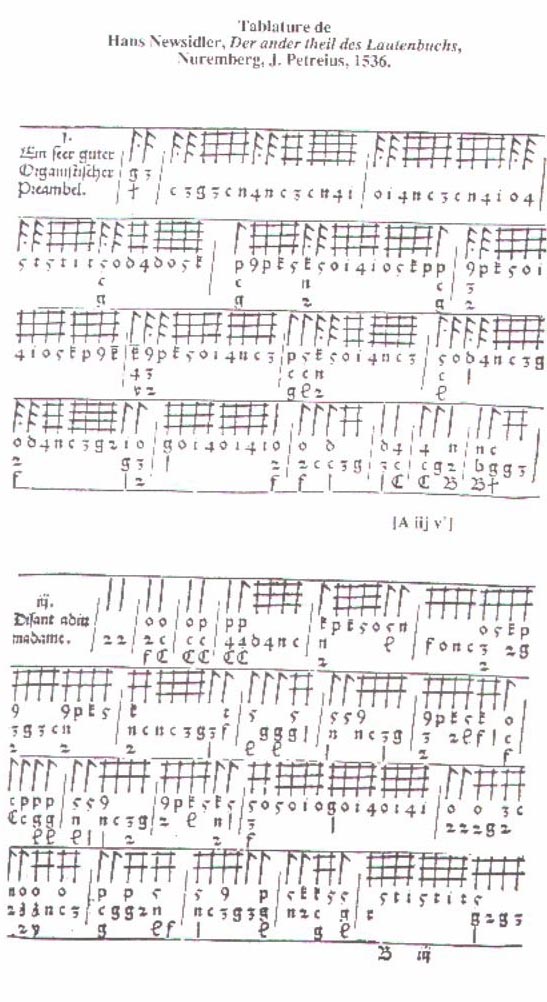
The Automated Transcription of 16th Cetury German Lute Tablatures
This project has been completed between the years 1985 and 1990 using second generation PCs.
A 16th century german lute tablature uses alphanumeric characters to represent the string/fret position for a given note and some limited symbols to represent a given vertical`s duration. However, there are no indications about the string where a given note should be played, neither the voice that note belongs to. These two elements are reconstructed in order to derive the true duration of a note and its assignment to one of the voices that compose a typical 16th century piece.

The three steps of automated tablature transcription
step 1: Tablature data entry
A special tablature editor that can be used for all three known Lute tablatures (German, french and Italian) has been developed. It provides a template where the user can enter the appropriate characters to represent the notes and move among them using arrow keys. It is different from a conventional text editor and thus is more practical for a musicologist.
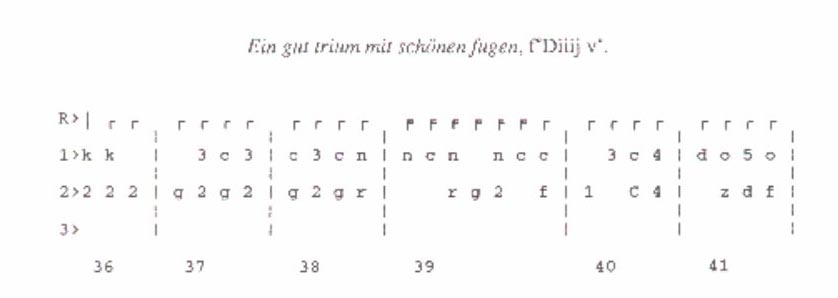
Step 2: The raw translation
The raw translation consists in translating a tablature character into a conventional staff notation note and assign the minimum duration of a tablature vertical.

Step 3: The Automated Restructuring
The Automated restructuring is used to assign appropriate durations and voice positions to each note. It is achieved with an artificial intelligence software that takes a number of parameters into consideration and optimizes the outcome. Among the parameters there are the presence of imitations, a technique similar to counterpoint, the intervals with contiguous notes and/or saturated chords.

The Tools
The automated tablature translation uses five different tools:
These tools were developed during the first
PC generation era, thus without Windows, etc...
The various voices are highlighted using colors.
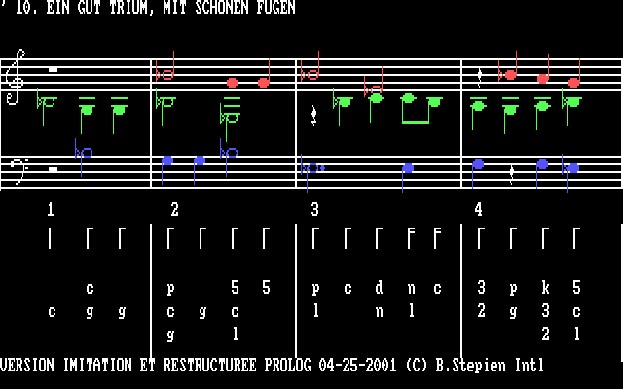
A Sample Of Michel Wallet's Printing Tool
This piece is an example of how the imitation Bb-G-G-Bb-EB was not shown in the original german tablature and had to be automatically detected.
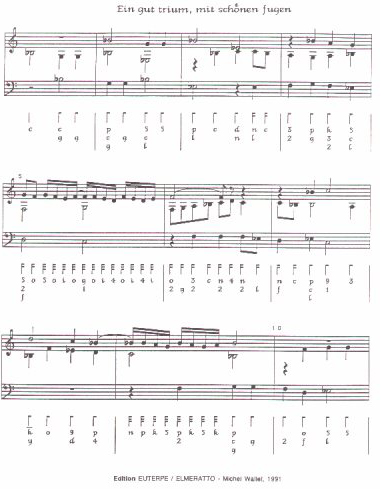
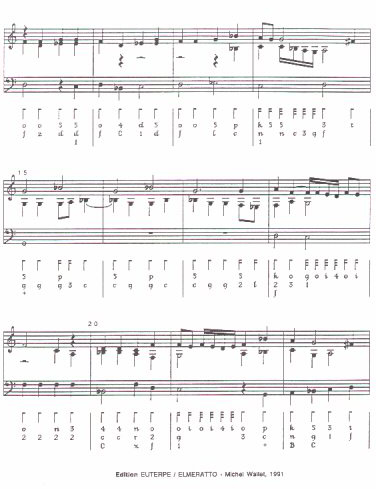
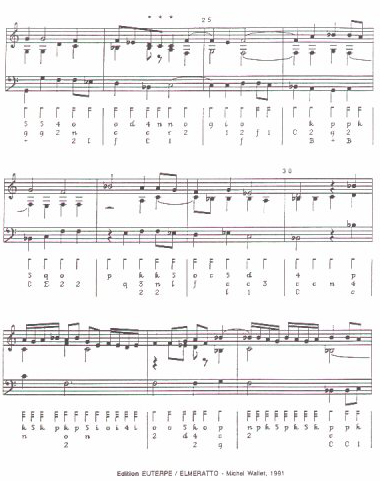
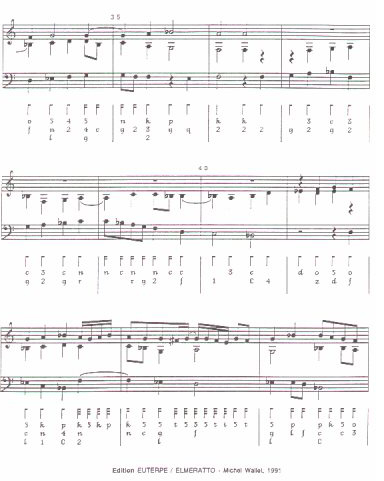
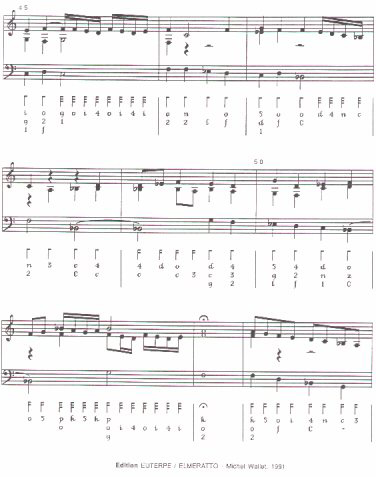
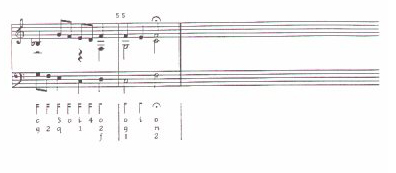
Automatic translation into French and Italian tablatures
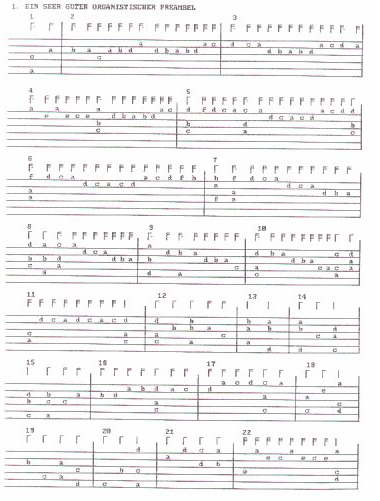
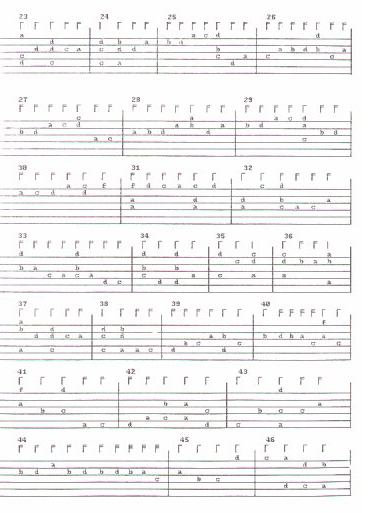
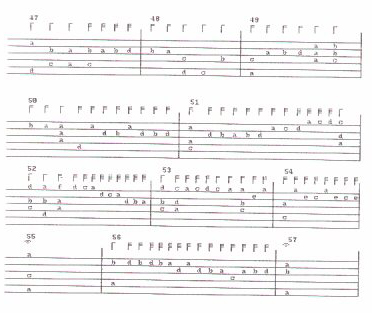
Publications
Computer and musicology: Automatic transcription of 16th century German Lute Tablatures (1991) Computer in the Humanities and Social Sciences
Computer representations and models in Music, Automatic transcription of 16th century lute tablatures: An Artificial Intelligence problem (1991) Oxford Press
Intelligence Artificielle et musicologie (1991) inRevue du Palais de la Decouverte (Publication CNRS)
La Transcription Automatique des Tablatures Allemandes, ELMERATTO (includes three full transcriptions of Hans Neusiedler pieces)
Hélène Charnassé: charnasse@ivry.cnrs.fr
Bernard Stepien: bernard@site.uottawa.ca
Michel Wallet:
Links